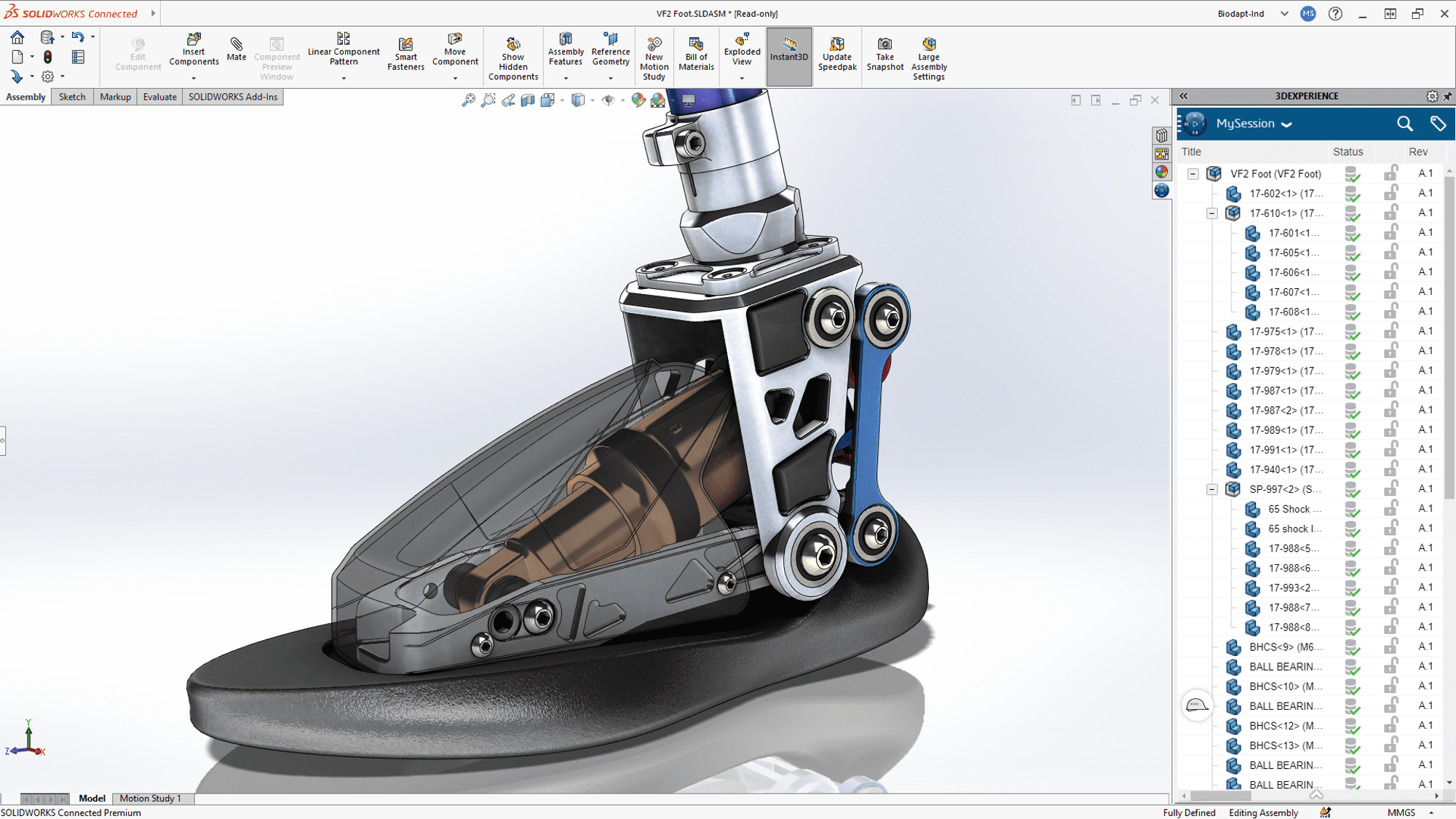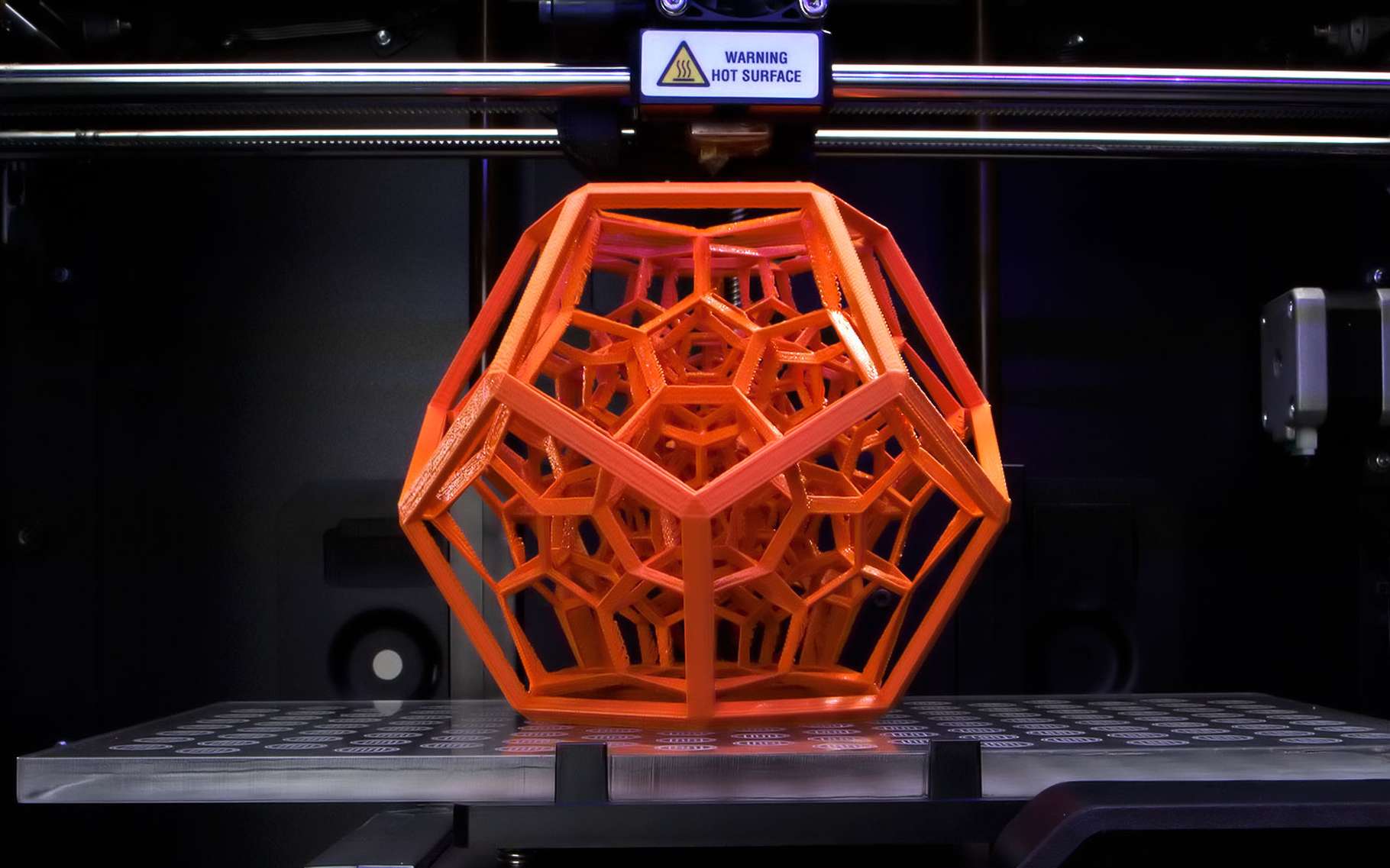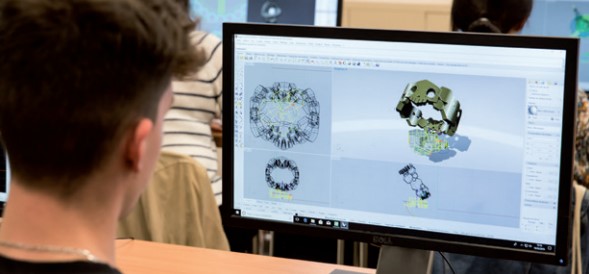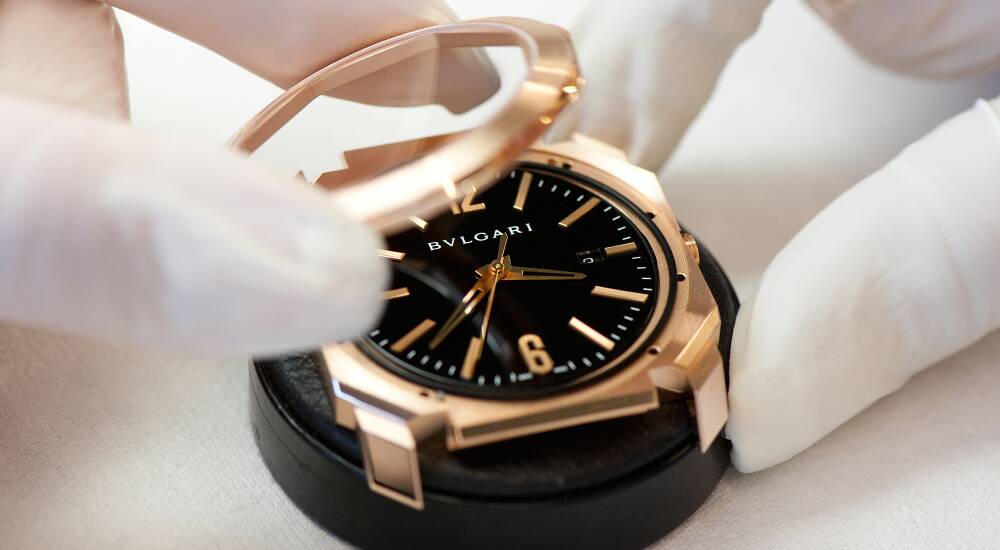3D printing, CAD, Design softwares… : The new tools of the Artcraftmen
By |Table of contents
Manual by definition, the crafts are the subject of much praise. And for good reason, the precision of their gestures, their expertise transmitted from generation to generation, their creativity and quality of execution, as well as their technicality leave us in awe. Pillar of the reputation of the great luxury houses, these craftsmen work with the rarest and most difficult materials. It is from their work that the emotion around an object or a garment emerges. They have always adapted their art to new techniques and materials. In recent years, new technologies have enhanced their know-how. But can we still speak of arts and crafts?
Artcrafts, first of all manual crafts
The legislator defines the crafts as “the mastery of gestures and techniques for working the material and requiring an artistic contribution”. Each object born of the craft thus carries the trace of the hand of the man, that is to say the opposite of an automated industrial production. When we talk about this gesture, we often speak of “the intelligence of the hand”. At Baccarat, we believe that “the eye, the hand and the expertise remain at the heart of all manufacturing processes”.

Image credit : Baccarat
Hours and years of training and practice are required to achieve excellence. No two designs are alike, and it’s all in the details: the stitching on a bag, a few millimeters of difference between two belts, or the slightly lighter or darker color of a scarf. Minute variations that only a trained eye is able to detect and which make each piece rare, the reflection of a gesture repeated over and over again.
To understand the world of art crafts is to understand the passion that drives those who practice them. It is often the commitment of a lifetime. In all luxury sectors, from gilding to haute-couture, including watchmaking and jewelry, it is their hands that create and manufacture these marvels of precision that make the reputation of the great houses. The crafts of art are the trades of the long time, at the antipodes of our time.

Image credit : i-diamants.com
However, like many others, they are facing profound changes in their environment that are leading them to reinvent themselves. Thus, while one would have thought they were spared by the digital revolution, it is catching up with them. But is a technique without gesture still a craft? Is the craftsman destined to become the one who drives the machine ?
Technical progress and artcrafts are one and the same
It would be wrong to think that artcrafts have remained frozen in the past. They have always known how to evolve and seize the opportunities that society placed in their path to increase their creativity and renew it. Thus, they have seized materials such as ivory in the twelfth century, kaolin in the eighteenth century or Corian in the twentieth century. Polyester foam came to fill seats with more and more complex shapes, bringing with it new processes and vocabulary: gluing and foaming rather than lining and setting in horsehair.
However, craftsmen do not seize innovation like others, that is to say with haste and enthusiasm. Each evolution of their practice is the object of an in-depth study and a measured prudence. Innovation must enrich their know-how, not distort it.

Image credit : Solidworks Blog
Until now, the traditional tool was limited to prolonging the gesture of the craftsman. The difference with new technologies is that the tools they provide are likely to reduce the place of the hand in the manufacturing process. The Computer Aided Design and Computer Aided Drawing (CAD) software, which have already penetrated a large number of workshops, now make the creator’s intention reproducible.

Image credit : Futura Sciences
The machines, processes and materials used are making lightning progress. Their limits are constantly being pushed back. Additive manufacturing technologies, characterized by 3D printing, which have been revolutionizing the world of jewelry for 20 years, are now increasingly sophisticated, precise and affordable.
Tradition needs innovation
The Luxury Brand’s image is almost entirely builded on the heritage notion. Each prestigious house has its own workshops, whose doors it willingly opens to highlight the transmission of ancestral gestures to which it contributes fully. Each one boasts, in its communication, of the remarkable quality produced by its “little hands”. In reality, craftsmen are potential innovators. Striving for perfection, trying things out, making mistakes, and starting over in order to unleash their creativity is at the very heart of their DNA.
Baccarat, which values the irreplaceable gesture of the craftsman, is also one of the luxury houses that has made the most extensive use of new technologies: continuous pool furnace in 1967, computer-assisted design of chandeliers in 2000, laser technology for engraving crystal in 2007, new process for producing coloured crystal in 2010…

Image credit : Prelle - Old loom
In Lyon, Prelle, the oldest silk and furniture manufacturer in the region, has installed new high-performance looms with computer-assisted design and electronic controls alongside its hand looms on which it is possible to weave certain chiselled velvets. These make it possible to weave large widths by eliminating seams.
Video credit : Bulgari
At the Bulgari Italian Manufacture, several dozen professions are represented, combining traditional know-how with the most modern technologies. Highly qualified technicians, supported by cutting-edge technology, ensure the design of tiny components that require a very high level of technical dexterity. Numerically controlled machines cut the blocks of gold or steel, while the “little hands” polish the parts down to the smallest links in the watch bracelet.
Video credit : FRED savoir-faire
The high jewellery brand FRED, for its part, created in 2017 L’Atelier FRED within its Parisian flagship: a place combining the most advanced digital technologies with jewellery know-how. Many luxury watch brands such as Breitling and Tag Heuer have also entered the connected watch market.
Video credit : atelier FRED
Technological evolution seems today to be the best way for the crafts to remain competitive in a globalised economy where everything moves very fast. Indeed, how can we talk to luxury houses, which are now digital enthusiasts and whose customers are ultra-connected, without understanding the codes of this new world? Digital thus appears to be a powerful lever for improving the efficiency of the craftsman without compromising his talent.
The avent of the digital craftsman
France has nearly two hundred art crafts. Reinscribing these craftsmen culturally, but also socially, in the current events and sociology (ecology, sharing, customisation) of our time means opening up this know-how to innovation and creation.
The need for customisation, which has increased in the world of luxury and favours unique pieces, small series and made-to-measure, obliges the craftsman to take the digital turn. New materials (plastics, composites, alloys, polar textiles, micro-fibres, etc.), as well as new technologies (microprocessors, software, connectivity, etc.) and manufacturing processes (injections, laser or water jet cutting, 3D printing, etc.) are added to manual know-how to increase creative potential. Freed from certain mechanical and repetitive tasks, the craftsman has more time to concentrate his thoughts on the gestures that no one else, and even less a machine, is capable of reproducing. With computer-designed models, everything becomes possible and much faster.

Image credit : Vision engraving & Routing Systems
Craftsmen are thus equipping themselves with digital machines similar to those used in industry, which is leading them to change their way of making and thinking about objects. Italy is one of the most advanced countries in this digital transformation, which is already very real even in the smallest companies. New tools allow craftsmen to diversify and personalise their creations, to better integrate them into the production processes of the major luxury houses and to facilitate their exports. A new generation of digital craftsmen is thus emerging.
When the computer finds its place within the major training schools
Because certain digital processes are now capable of achieving feats, training must adapt and carry out its cultural revolution. The mistake would be to remain locked in the past and refuse to accept the new. The master of art in 2021 is the one who knows how to play with and outwit the machine, how to think and act with it.
We can speak here of the hybridization of skills, which can be found in the complementarity between man and machine with a view to developing new intelligences and know-how. This is an opportunity for craftsmen eager to develop their knowledge to explore a new field of expression.

Image credit : Haute école de Joaillerie, digital Bachelor
In schools of fine jewelry and watchmaking, students now have curricula that include an exponential share of digital skills. Thus, they learn to create with the help of technological tools, even if the ancestral know-how remains at the heart of their training. This “digitalization” is being pushed by the luxury houses themselves, who want to be able to adapt more quickly to market changes. Cartier is the main partner of the first Bachelor’s degree in Jewelry Design with high digital added value, launched by the Haute École de Joaillerie de Paris in early 2020.

It would seem that the computer is gradually finding its place in the workshops alongside the watchmaker’s tweezers or the jeweller’s bocfil. In this new environment, the challenge for training organizations is twofold. On the one hand, they have to support the transformation of traditional know-how towards new practices and, on the other hand, to encourage the emergence of new professions of manual excellence resulting from technological and ecological transmission.
They must also ensure the renewal of their equipment, which requires very significant investments to avoid obsolescence, but also update their skills and bring in new expertise. The support of the public authorities and the private sector, particularly the luxury goods companies, is therefore absolutely necessary for the digital revolution in the art professions to continue unhindered.
3D Printing : a real revolution in the Jewelry world, but not only …
In the jewelry world, the arrival of additive manufacturing already dates back almost 20 years. At the time, it was compared to the arrival of digital photography. A revolution, then. In this world, this technology has fully found its place. Without replacing the work of the craftsman, it has provided him with undeniable advantages in terms of time savings and economies of scale, particularly with regard to the manufacture of molds, a particularly time-consuming stage.
However, 3D printers have been the subject of much ink, accused of signing the death of small craftsmen. A prophecy that, for the past 20 years, has still not been fulfilled. 3D printing actually brings to the jeweler, an increased creativity, but also gives him the opportunity to design unique and highly personalized objects. CAD software is even able to suggest new wax casting models from a first shape. Thanks to 3D printing, lines are becoming more and more elaborate, with a complexity that is often difficult to achieve with a manual process or that would take an infinite amount of time.

Image credit : BuzzWebzine Maison 203 3D printed handbag

Image credit : Maison 203 - 3D printed Necklace
And jewelers are not the only ones to be tempted. Maison 203, a studio specializing in the creation of 3D printed fashion accessories, launched last year a very successful designer handbag made with this technique. For its part, Ica & Kostika unveiled a collection of 3D printed luxury shoes, Exobiology, with original lines to say the least. As for Julia Daviy, a fashion pioneer who pushes 3D creation a little further each year in her collections, she is at the origin of a skirt that is entirely customizable and zero waste.

Image credit : modeintextile.fr
In the workshops, we now see the appearance of 3D scanners, high-precision machines capable of scanning a jewel, a ring, a bracelet, a necklace and reproducing it, or even creating a new object from it. Another novelty is 4D printing, which will allow us to explore an additional dimension, that of time. Indeed, the objects created through this process will be able to transform themselves according to the context (hot, cold, wet…), thanks to programmable materials (cellulose fibers).
The gesture of the craftsman enhanced by new technologies
However, digital tools will never replace manual skills, which remain at the heart of the craftsman’s profession. The latter must therefore learn to handle the mouse as well as the file or the flashlight!
CAD or computer-aided design (CAD) software is above all an aid to design and modeling. They allow you to modify a piece of jewelry in a few clicks, to test colors, shapes, additions, materials, and thus to make your piece evolve as you make it. Where it used to take 20 hours to make a first model of a piece of jewelry by hand, it now takes only 5 hours.

Image credit : Le club de mediapart
The impact that technology will have on the crafts is obvious and represents a challenge as perilous as it is exciting for these professionals. Depending on the sector, but also on the level of appetite of the craftsmen for these new skills, they will develop more or less quickly.
If the digital revolution in this sector brings with it an indisputable change, let’s not forget that the generalization of mechanization in the workshops in the 20th century has also forced the crafts to rethink their methods without making them disappear. Thus, the threat of the disappearance of crafts, which was brandished when the first technologies appeared in the workshops, has since been transformed into a much more positive and ambitious vision.
The fact remains that this digitalization brings with it a profound paradigm shift. Where it was taken for granted that the transmission of knowledge was necessarily downward, from the master to the student, from now on, it is the young apprentices, after their training, who bring new knowledge to the workshops. To the repetition of the gesture, they graft the need to constantly renew the aesthetic codes. To the secrets of manufacture, they answer collaborative approach. Craftsmen who are new to the art professions now possess new skills and competencies that certains of their elders have not mastered yet.

Image credit : Bulgari
Under the decisive influence of new technologies, the craft industry is now experiencing a reversal of its model. If this acceleration is destabilizing, let us remember that the doors of workshops have never remained closed to progress for very long. In each era, their know-how has been pushed, challenged and enhanced. Digital technology is only a new step in the history of their permanent revolution. It took 15 years for the luxury market to embrace the digital transformation. Watchmaking and jewelry, but also haute couture, are now taking full advantage of the tools born of the digital revolution. What remains is to find the right balance between innovation and manual production: still a challenge for many craftsmen.
Contact Hapticmedia now to see our successful user cases and the visible improvement we have brought to our clients. You will be amazed.